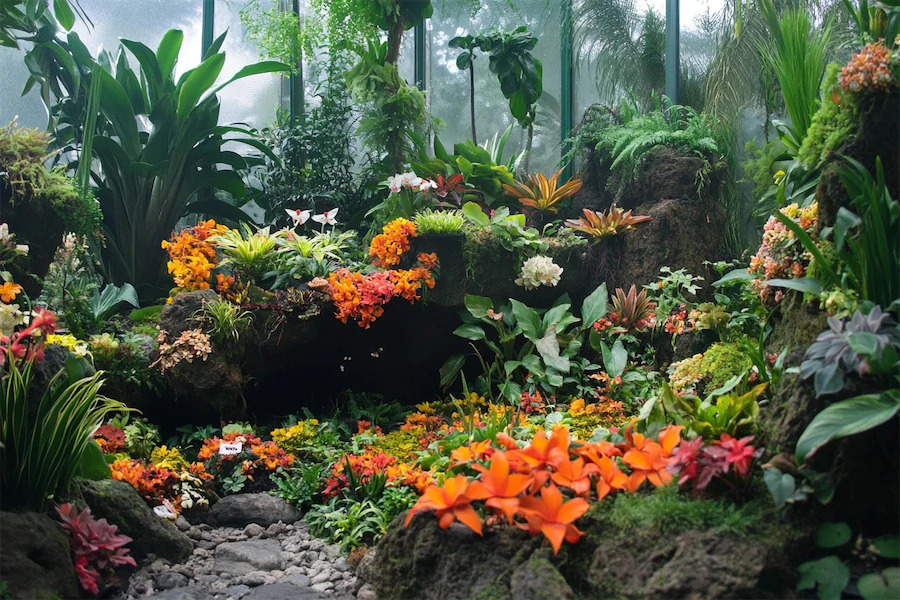A terrarium garden is a miniature, self-sustaining ecosystem housed within a transparent container, allowing for the cultivation of plants in a controlled environment. These enclosed gardens not only serve as decorative pieces but also offer a unique way to bring nature indoors, especially in limited spaces.
History and Origins of Terrarium Gardens
The concept of the terrarium dates back to 1842 when English botanist Nathaniel Bagshaw Ward accidentally discovered that plants could thrive in enclosed glass containers. This led to the creation of the “Wardian case,” a sealed glass container used to transport plants over long distances and is considered the predecessor of the modern terrarium.
Key Features of Terrarium Gardens
- Enclosed Environment: Terrariums can be either closed or open. Closed terrariums create a humid environment suitable for tropical plants, while open terrariums are ideal for plants that prefer drier conditions.
- Self-Sustaining Ecosystem: In a closed terrarium, water cycles through evaporation and condensation, reducing the need for frequent watering. This creates a microclimate that supports plant growth with minimal maintenance.
- Aesthetic Appeal: Terrariums serve as living art pieces, adding a touch of greenery and elegance to any indoor space. They can be customized with various plants, decorative stones, and miniature figurines to reflect personal style.
Applications of Terrarium Gardens
- Interior Decoration: Terrariums are popular decorative items in homes and offices, bringing a sense of tranquility and nature indoors.
- Educational Tools: They serve as practical demonstrations of ecological concepts, such as the water cycle and plant respiration, making them valuable educational tools in classrooms.
- Therapeutic Benefits: Engaging in the creation and maintenance of terrariums can be a therapeutic activity, promoting relaxation and mindfulness.
Considerations When Choosing a Terrarium Garden
- Plant Selection: Choose plants that thrive in similar environmental conditions. For closed terrariums, moisture-loving plants like ferns and mosses are ideal, while succulents and cacti are better suited for open terrariums.
- Container Choice: The container should be transparent to allow light penetration and should be chosen based on the humidity needs of the plants. Closed containers retain more moisture, suitable for tropical plants, whereas open containers provide better air circulation for arid-loving plants.
- Maintenance: While terrariums are low-maintenance, they still require periodic care, such as pruning, monitoring for mold, and ensuring adequate light exposure. Overwatering should be avoided to prevent root rot.
Conclusion
Terrarium gardens offer a captivating way to incorporate plant life into indoor environments, combining aesthetics with the science of a self-sustaining ecosystem. Whether for decorative purposes, educational insights, or therapeutic activities, terrariums are versatile and enriching additions to any space.
